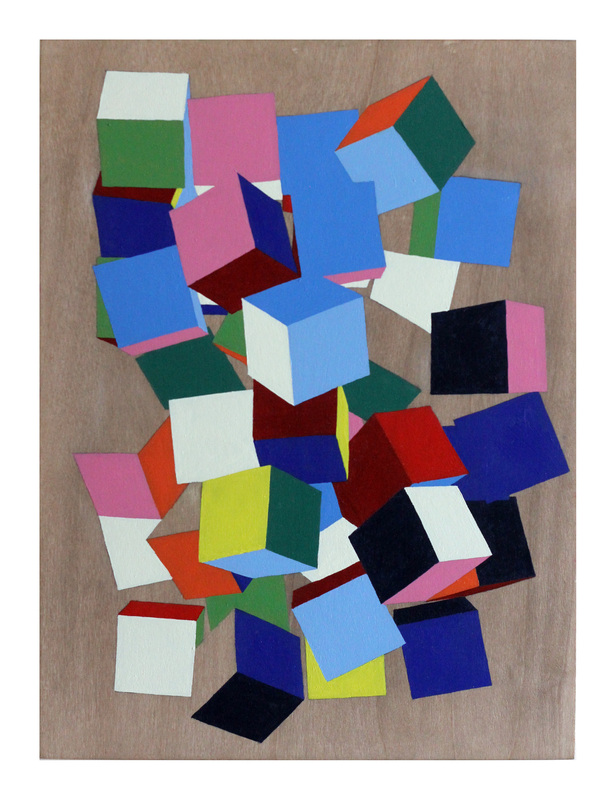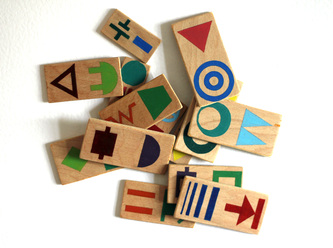The Blocks and Chance Series
This series of works investigated the perception of space, whilst exploring an innocent and playful aesthetic which referenced children's toys, dominoes and comic book graphics. Coloured blocks are scattered on a gridded surface, digitally mapped using Sketch Up, and then painted from the digital map. Chance colour and compositional arrangements ask questions about the universal application of theories on colour and composition.
In addition, particular surfaces were left blank to create tension between the background wood grain and foreground areas. This led to areas of perceptual instability, which both complicates and adds interest (brings attention) to the spatial reading of the paintings. These reference Cezanne's use of spatial ambiguity to highlight the space within a painting.
The works explored a range of variables including the complexity of the coloured surfaces (ranging from flat colour, through symbols, to representational areas), complexity of the composition and the relationship of the view to the edges of the board. At their most complex the pieces begin to reference research into Memetic (cultural) evolution, in line with theories developed by Professor Susan Blackmore from the Selfish Gene theories of Professor Richard Dawkins.
The symbols chosen are as close to the Platonic Solids as possible in order to resist creating distracting prior associations in the viewer. Although, some of the more complex symbols are drawn from electrical diagrams, both obscure enough to avoid associations and appropriate for a materialist view of perception created by electrical signals in the brain.
In addition, particular surfaces were left blank to create tension between the background wood grain and foreground areas. This led to areas of perceptual instability, which both complicates and adds interest (brings attention) to the spatial reading of the paintings. These reference Cezanne's use of spatial ambiguity to highlight the space within a painting.
The works explored a range of variables including the complexity of the coloured surfaces (ranging from flat colour, through symbols, to representational areas), complexity of the composition and the relationship of the view to the edges of the board. At their most complex the pieces begin to reference research into Memetic (cultural) evolution, in line with theories developed by Professor Susan Blackmore from the Selfish Gene theories of Professor Richard Dawkins.
The symbols chosen are as close to the Platonic Solids as possible in order to resist creating distracting prior associations in the viewer. Although, some of the more complex symbols are drawn from electrical diagrams, both obscure enough to avoid associations and appropriate for a materialist view of perception created by electrical signals in the brain.















